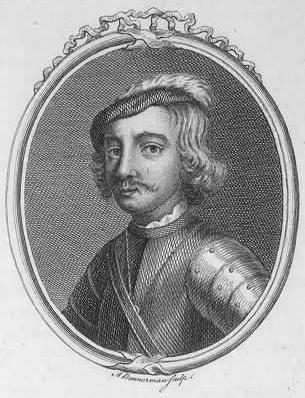Indulf (954-962)
Indulf (A.K.A Idulb mac Causantín) was king of Scots from 954. He was the son of Constantine II (A.K.A Causantín mac Áeda). Indulf’s mother may have been a daughter of Earl Eadulf I of Bernicia, who was an exile in Scotland.
Idulb (Indulf) is an Old Irish name derived from either the Old Norse name Hildulfr or the Old English name Eadwulf. Idulb was later rendered Indulf under Old French influence.
He was crowned at Scone, on ‘the Hill of Credulity’ (Caislean Credi) or the Moot Hill, as it became known to later centuries. It was also known as the ‘Hill of Belief’.

The Moot Hill and chapel at Scone, perhaps the Hill of Belief
John of Fordun and others supposed that Indulf had been king of Strathclyde in the reign of his predecessor, based on their understanding that the kingdom of Strathclyde had become a part of the kingdom of Alba in the 940s. This, however, is no longer accepted.
During the reign of Indulf the kingdom of Scotland was extended south of the Forth. Indulf’s main claim to fame was the regaining of the fortress of Edinburgh, or Dun Eden, from the Saxon King Edred, making him ruler of the land as far south as the Lothian River Esk, on the east side of the island.
The Chronicle of the Kings of Alba says: “In his time oppidum Eden”, usually identified as Edinburgh, “was evacuated, and abandoned to the Scots until the present day.” This has been read as indicating that Lothian or some large part of it, fell to Idulb at this time. However, the conquest of Lothian is likely to have been a process rather than a single event, and the frontier between the lands of the kings of Alba and Bernicia may have lain south and east of Edinburgh many years before Idulb’s reign.
Indulf’s death is reported by the Chronicon Scotorum in 962, the Chronicle of the Kings of Alba adding that he was killed fighting Vikings near Cullen. The Prophecy of Berchán, however, claims that he died “in the house of the same holy apostle, where his father [died]“, that is at the céli dé monastery of St Andrews. He was buried on Iona.

St Mary’s Collegiate Church has its origins in Kilrymont monastery and its group of canons called “Culdees” or Céli Dé (“Vassals of God”)
Indulf was succeeded by Dubh (A.K.A Dub mac Maíl Coluim) son of his predecessor. His sons Cuilén and Amlaíb were later kings. Eochaid, a third son, was killed with Cuilén by the men of Strathclyde in 971.






